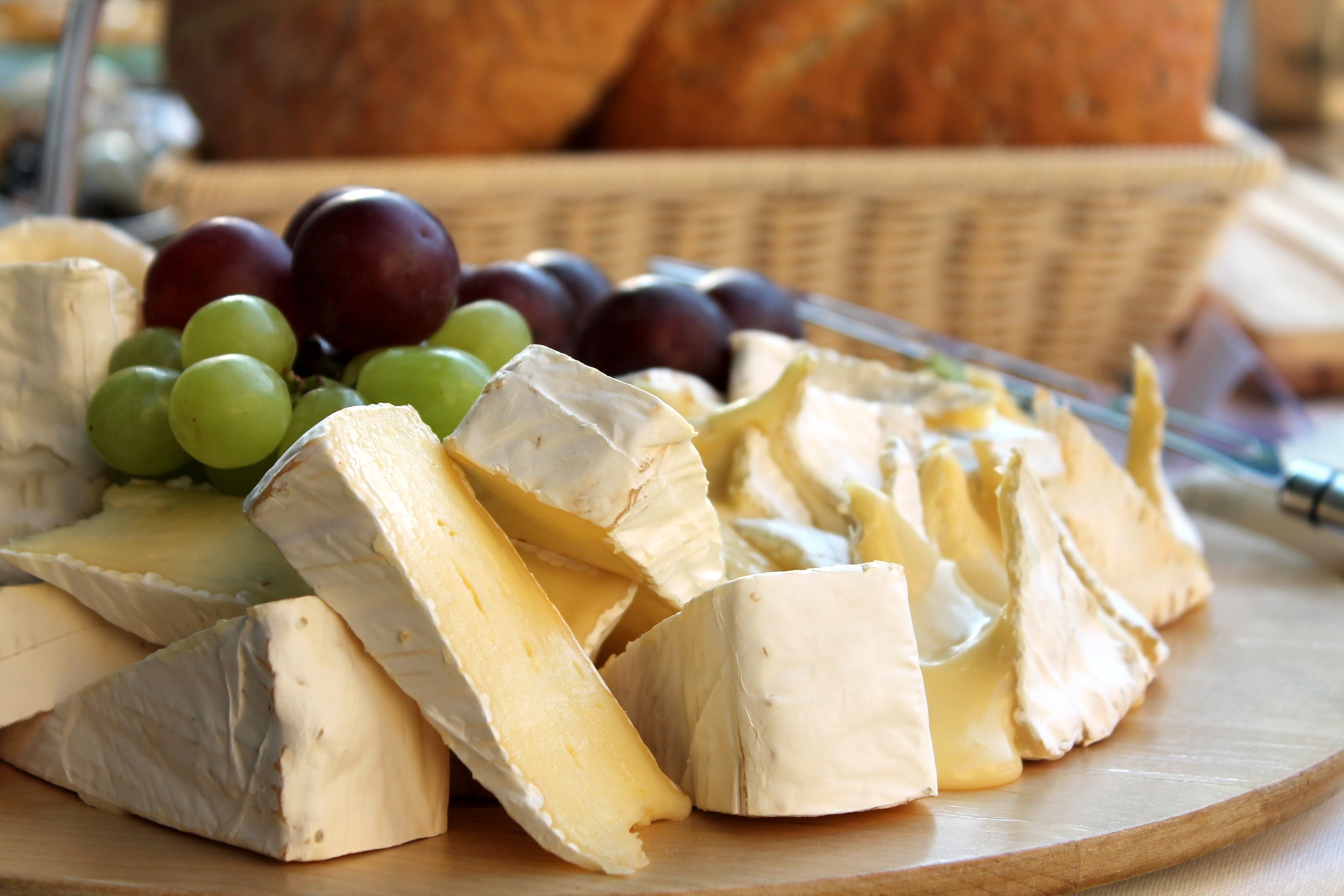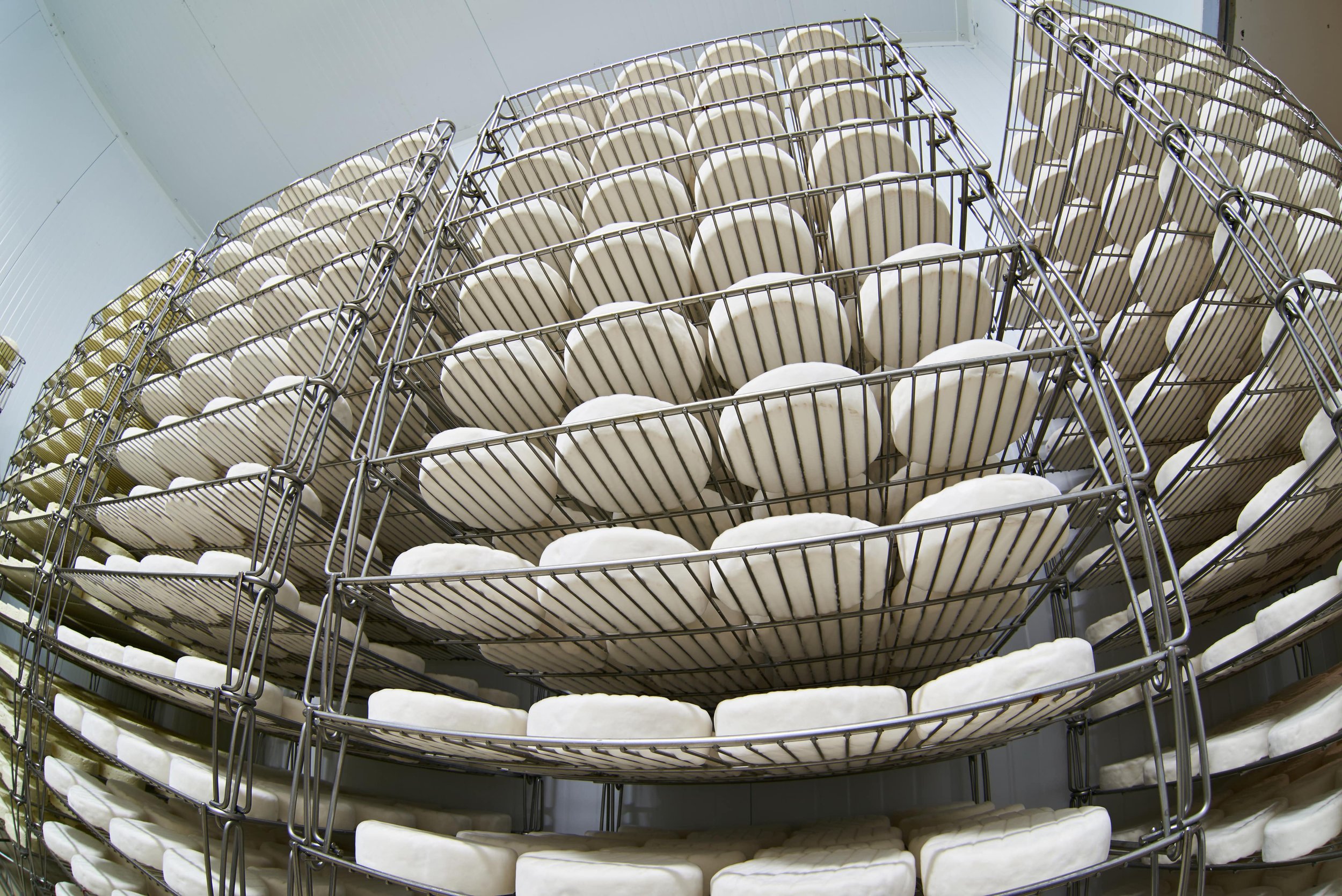Camembert vs. Brie: A Chef's French Cheese Showdown
Camembert and Brie cheese are two of the most popular French cheeses in France and, for that matter, the world. Many types of Brie and Camembert exist, but cheese connoisseurs consider Camembert de Normandie and Brie de Meaux the best versions of these creamy cheeses.
Cheese, like French cuisine, is regional. These two soft-ripened cheeses originated in northern France and are protected by AOC regulations. These regulations ensure that the cheeses are produced using traditional methods in an approved region of production.
Both also make a great addition to French cheese boards, one of my favorite things to make and eat. But in a Camembert vs Brie cheese matchup, how do you choose?
As a cheeseaholic, I love them both. One of my favorite activities in France is to walk down my Number 1 Paris food street and visit the cheesemongers. They are always willing to answer questions, often offering samples to help you decide on choices.
But, if you don’t have a French cheesemonger available, here’s everything you need to know about the key differences between Camembert and Brie cheeses.
Camembert vs Brie: What's the Difference?
At first glance, these two beloved cheeses seem to use similar techniques and have similar characteristics. But a deeper dive will reveal the distinct and subtle differences between them.
Origins
Let’s start with the Camembert and Brie differences in history and region of origin. Camembert comes from Normandy, and the AOC Camembert de Normandie can only be produced in the departments of Calvados, Eure, Manche, Orne, and Seine-Maritime.
Île-de-France is the Brie region of origin. This is also the region where Paris is located. So, if you are visiting France’s capital, Brie de Meaux should be on your must-eat foods of Paris list. Today, the protected designation of origin for Brie, sometimes referred to as the region of Brie, includes the “departements” of Aube, Haut-Marne, Loiret, Marne, Meuse, Seine-et-Marne, and Yonne.
The craziest difference between the two cheeses: Brie is said to be older than Camembert by a millennia! The iconic French cheese dates back to the 8th century while Camembert, a comparative baby, wasn’t created until the 18th century by Marie Harel.
Milk and Production
Both Brie and Camembert are made from cow milk’s in similar ways, but two things stand out in the production process that result in two very different cheeses.
First, Camembert uses stronger lactic starters and uses them more often during the cheese-making process than does Brie. This creates a more robust flavor and aroma.
Second, Brie adds cream and is therefore higher in fat. This helps produce the mild creamy flavor Brie is so revered for.
For both types of cheeses, the cow milk can be raw milk or pasteurized milk. The United States has an unpasteurized rule when it comes to importing cheese, so the ones you’re eating in the States are most likely not from raw cow’s milk.
Size
A chief difference between Camembert and Brie is their size. Camembert is smaller and thicker than Brie. The small Camembert wheel usually weighs around 250 grams (8 ounces), whereas a wheel of Brie weighs in at around 1 kilogram (2 pounds).
That’s why traditional Bries are sold by the wedge or slice and Camembert is sold by the whole wheel.
Rind
Although both Brie and Camembert fall into the category of bloomy rind cheeses, Camembert has a white rind that is often speckled with red or brown spots. On the other hand, the rind of the larger and flatter Brie is less speckled and the rind can appear pale yellow.
Texture
Another difference between these two cheeses is their texture. While both are soft and creamy on the inside, Camembert tends to be denser than Brie. This means that it typically has a firmer texture when you cut into it. Brie tends to have a creamier texture due primarily to its higher fat content.
Flavor and Aroma
Perhaps the most significant difference between Brie and Camembert is their flavor profile. Camembert has a stronger, earthier flavor and aroma than Brie, with notes of mushroom and garlic.
Camembert also has a slightly pungent taste due to its fermentation process. In contrast, Brie has a milder, buttery flavor with hints of sweetness and nuttiness.
Aging Process
Both Camembert and Brie undergo an aging process where they develop their distinct flavors and textures. However, there are some differences in how the two cheeses age.
Camembert typically ages for around three weeks before it's ready to eat. During this time, the cheese develops its characteristic bloomy rind as well as its dense texture and strong flavor.
Brie takes longer to age compared to Camembert—usually around four to six weeks, but sometimes even longer. The increased aging also plays a role in Brie’s softer texture.
Some Bries, like Brie de Melun, are aged for lengthier periods to develop a more complex flavor profile.
Serving Suggestions for Camembert and Brie Cheese
How do you eat Camembert and Brie cheese? Like most kinds of cheese, you’ll want to serve them at room temperature. These cheeses pair well with a variety of foods, making them an excellent choice for any meal. And the French do eat cheese at any meal—and even after meals.
One of the best Paris desserts I’ve ever had was an amazing cheese plate after dinner. You have to love a country that has cheese on the menu any time of day! Well, except breakfast in France, where they usually stick to viennoiserie pastries.
Fruits
Camembert and Brie cheese pair well with a variety of fruits, including grapes, apples, pears, and figs. The sweetness of these fruits complements the mild flavor of the cheeses.
When choosing fruits to pair with Camembert or Brie cheese, it is best to choose those that are ripe but not overly sweet. This will help balance out the flavors so that neither the fruit nor the cheese overpowers each other.
Nuts
In addition to fruits, these cheeses also go well with nuts, especially walnuts, almonds, and hazelnuts. Nuts provide a crunchy texture that contrasts nicely with the creamy texture of Camembert or Brie cheese. Nuts also add an earthy flavor that complements both cheeses.
Breads
For a savory pairing, try serving Brie or Camembert with crackers or crusty bread. France’s most famous food, the baguette, is a natural with these styles of cheese.
Or try a baked Brie: Brie wrapped in dough and then baked. There are more baked Brie recipes than baked Camembert recipes because Brie is softer and higher in fat, which means it tends to melt better.
Meats
Cured meats like prosciutto or salami don’t need to be reserved exclusively for Italian cheeses. They work well with these French cheeses too.
The saltiness of these meats contrasts wonderfully with the creaminess of the cheeses. Crunchy crackers or bread adds another layer of texture to meat-cheese pairing.
Wine Pairings
I always believe you should pair wine according to what you like and not worry about the rules. But if you’re looking for suggestions, comparing Camembert cheese vs Brie cheese highlights natural differences that may help your decision.
Camembert’s strong flavor makes it an excellent pairing for bold wines like Cabernet Sauvignon or Pinot Noir.
Brie's milder flavor makes it a great cheese to pair with lighter wines like Chardonnay, Sauvignon Blanc, and other white wines.
Can You Eat the Rind of Brie and Camembert Cheese?
You might have wondered whether it is safe to eat the rind on Brie and Camembert cheese. As noted earlier, the white rind that covers these soft cheeses is known as a bloomy rind.
As a general rule, bloomy rinds are a completely edible rind. In fact, to cheese lovers, eating the rind can enhance the overall taste experience of these delicious cheeses.
The Formation of Bloomy Rind
The bloomy rind on Brie and Camembert cheese is formed by a type of mold called Penicillium camemberti used in the production process. This mold grows on the surface of the cheeses during the aging process, creating a fluffy white layer that protects the interior from bacteria and other harmful microorganisms.
The mold also breaks down some of the proteins in the cheese, helping to create a creamy texture and distinctive flavor. The longer the cheese ages, the thicker and more pronounced its bloomy rind becomes.
Is It Safe to Eat Bloomy Rind?
Yes, it is safe to eat the bloomy rind on Brie and Camembert cheese. The white mold used to create this type of rind is not harmful or toxic to humans. In fact, many people consider it an essential part of these cheeses' unique flavor profile.
However, if you are sensitive to molds or have an allergy to penicillin, you should avoid eating bloomy-rind cheeses altogether. Additionally, if you notice any signs of spoilage, such as discoloration or foul odor coming from your cheese's rind or interior, discard it immediately.
Enhancing Flavor with Bloomy Rinds
Eating bloomy-rinded cheeses with their white coating intact can provide a slightly earthy and nutty flavor that complements their creamy interior perfectly. The combination creates a delightful balance between sweet creaminess and savory tanginess.
However, some people find that they do not enjoy this added flavor profile and prefer to remove the rind before eating their cheese. This is entirely a matter of personal preference, and there is no right or wrong way to enjoy Brie or Camembert.
Cutting Off the Rind
If you decide to remove the rind from your bloomy-rind cheese, it's essential to do so correctly. Use a sharp knife and cut off only the thinnest layer possible, leaving as much of the creamy interior intact as possible.
Which is Better—Camembert or Brie?
So, after exploring the technical differences, taste variations, and production methods of Camembert and Brie cheese, which one is better? The answer depends on your personal preference.
If you prefer a stronger flavor with a more pungent aroma, then Camembert might well be the cheese for you. Its soft texture and earthy flavor make it an excellent addition to any cheese board or recipe. However, if you prefer a milder flavor with a creamy texture that melts in your mouth, then Brie might be the better option.
Overall, there is no clear winner between Camembert and Brie as they both have their unique characteristics that appeal to different tastes. It's worth trying both varieties to determine which one suits your palate best. If you’re lucky, you’ll love both!













